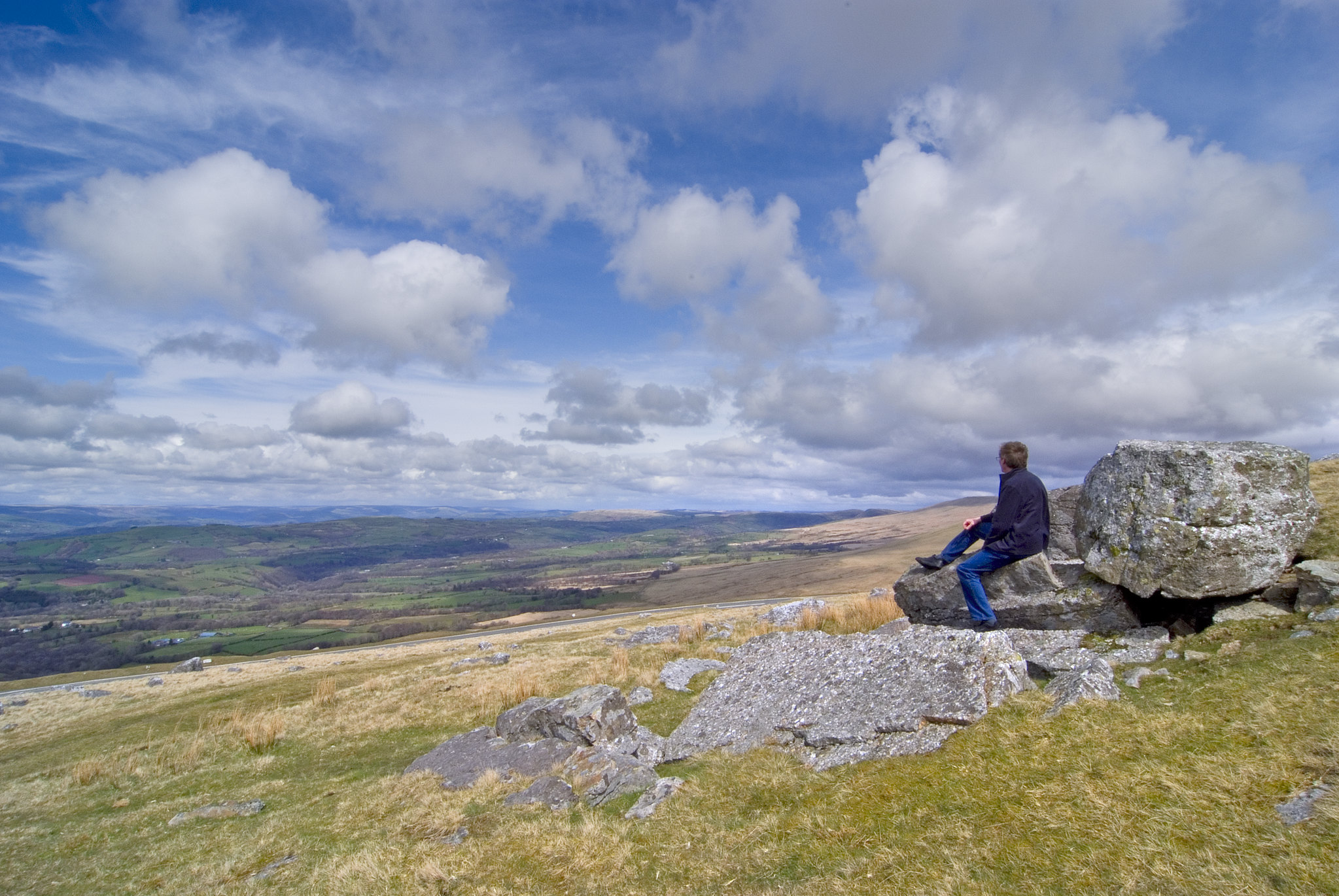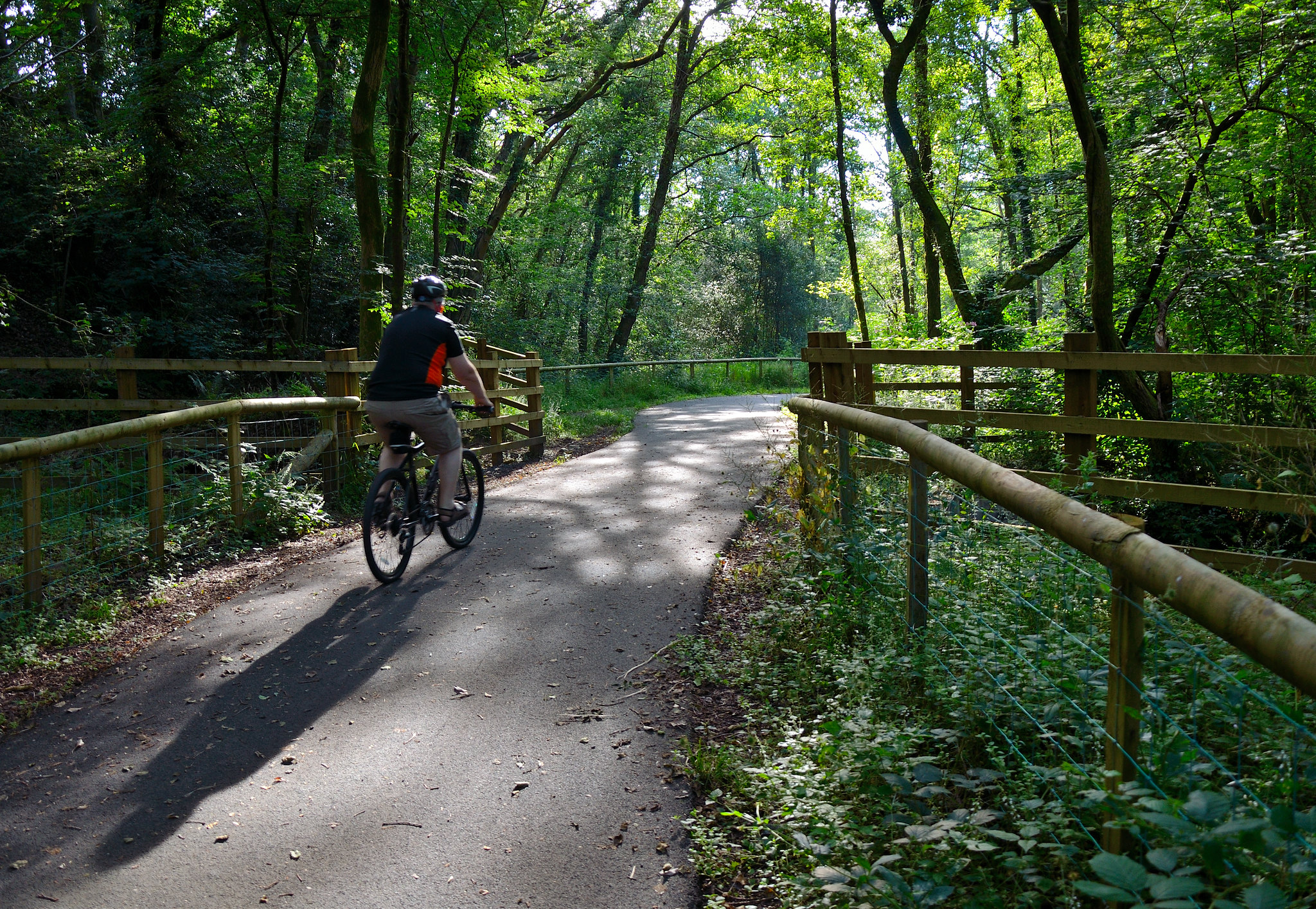People
Image: Herbert's Quarry Viewpoint

Why is green and blue infrastructure important for people?
Access to green and blue spaces on your doorstep has long been known to benefit physical health. However, today it is increasingly linked to positive effects in mental health – whether it’s a footpath for a morning dog walk, leafy trees on the local high street, or a local area to play. The experience of the Covid-19 pandemic from 2020 only heightened awareness of these benefits.
For young people, opportunities to play outside, particularly in natural surroundings, are found to significantly reduce mental ill health.
Natural spaces are not only a forum for exercise. They can also provide the opportunities to come together and socialise. A ‘pocket park’ or bench within a residential area can provide space for casual interaction. Allotments and community gardens can connect people through volunteering.
GBI networks are increasingly recognised as part of preventative health care. ‘Green social prescribing’ is one innovative way being looked at by the NHS to prescribe nature-based interventions for a range of health concerns. It works by linking people with local ‘green’ activities, such as walking groups, community gardens and food-growing projects.
What does national and regional policy say?
The Well-being of Future Generations (Wales) Act was passed by the National Welsh Assembly in 2015. It focuses on how to improve quality of life for both current and future generations in Wales.
The Act put in place seven well-being goals. The goals are important building blocks for strategies like this and have been integrated into the themes which guide this Strategy.
The ‘Future Wales’ National Plan to 2040 sets the direction for future development in Wales. Policy 9 (Resilient Ecological Networks and Green Infrastructure) requires the use of nature‑based solutions within the GBI network as a key mechanism for social equality and well‑being. The Environment (Wales) Act 2016 requires the production of Statements and one of the key priorities in the South West Wales Area Statement is the reduction of health inequalities.
This is backed up by the ‘Prosperity for All’ economic action plan, which encourages an increase in physical activity in order to secure a healthy and active, united and connected Wales.
Planning Policy Wales (PPW), sets out the land use planning policies of the Welsh Government and highlights green infrastructure as an effective means of enhancing health and well-being by linking dwellings, workplaces and community facilities.
In terms of play opportunities, the Children and Families (Wales) Measure 2010 places a duty on all Local Authorities across Wales to assess and secure sufficient play opportunities for children in their area. This is achieved through Play Sufficiency Assessments.
Another way of improving health outcomes through infrastructure is through the provision of green active travel routes. The Active Travel (Wales) Act encourages more people to undertake regular journeys on foot and bicycle. Finally, the Countryside and Rights of Way Act (2000) gives all the right of access on foot for the purpose of open-air recreation.
What does local policy say?
Policies REC1 to REC3 of Carmarthenshire’s Local Development Plan require open space to be protected and accessibility enhanced. Open space is a key consideration both in terms of its benefits to health and well-being and as an arena for social interaction and community activities.
In 2020, the Council assessed Carmarthenshire’s existing green infrastructure. The assessment identified four objectives aimed at reducing health inequalities:
- Tackling urban air pollution.
- Ensuring accessible greenspaces for all.
- Creating recreation opportunities to improve mental and physical health.
- Ensuring healthy ecosystems (e.g. bathing waters).
Carmarthenshire’s 2019 Play Sufficiency Assessment (being updated at the time of publishing) forms part of the Welsh Government’s anti-poverty agenda, which recognises that children can experience poverty through lack of access to playful spaces.
Carmarthenshire’s Corporate Strategy includes a number of principles relating to access to nature. It sets out an ambition for Carmarthenshire to become the ‘cycling capital of Wales’ by delivering greenways, trails and other infrastructure. It also seeks to work with community organisations to improve access to the network of footpaths and bridleway and promotes a tree strategy that will mitigate the effects of air and noise.
How is green and blue infrastructure currently serving the people of Carmarthenshire?
Image: Amman Valley Riverside Path

Carmarthenshire’s Open Space Assessment (2018-2033) assesses the provision of open space across the county – including amenity green space, cemeteries, Country Parks, play spaces and more natural green spaces.
It highlights that the overall provision of natural greenspace across the county is high. Overall, it stands at 220 hectares per 1,000 people, exceeding national standards.
However, open space provision in the county varies significantly from place to place – including play facilities. Out of 58 electoral wards, 14 fall below the standard. A total of 12 have no provision of qualifying natural greenspace.
What are the challenges and pressures?
Carmarthenshire has a significant ageing population. According to the Carmarthenshire Well-being Plan, by 2039 around 1 in 3 Carmarthenshire residents will be aged 65 and over.
Poor mental, physical and social health is increasing in both younger and older populations – 3 in 10 residents suffer from mental health issues and 1 in 4 residents have a limiting long term illness (Well-being Plan).
The link between poorer life expectancy, physical health and well-being, and living in deprived areas is a growing concern for Carmarthenshire – given that there is a dramatic 18.5 years gap in life-expectancy between the most and least deprived communities.
Mapping of multiple deprivation shows that the most deprived areas of the county are generally found in urban areas in the south east, around Llanelli.
The challenge for Carmarthenshire is to create blue and green spaces and networks that are accessible and beneficial for all – whatever age you are or regardless of where you live. Stakeholders told us that the county’s beautiful natural environment is not accessible for all and “we need to focus on those who are missing out.”
Air pollution is a further health concern. High levels of car traffic in urban centres such as Llanelli and Carmarthen are leading to poor air quality (see interactive map). This was highlighted as a key health challenge by stakeholders during the development of this Strategy. Stakeholders also highlighted poor levels of walking and cycling infrastructure.
Finally, another growing concern in recent years has been the risk of flooding, particularly in coastal and estuary towns. Given that these weather patterns are likely to be exacerbated by climate change, this raises the prospect of serious mental health challenges which are known to come with repeated flooding.
People: Summary of key issues
Efforts must be made to:
- Address poor physical health through more active lifestyles.
- Support mental health.
- Provide more opportunities for active travel.
- Ease the impact of isolation with changing demographics.
- Focus on pockets of deprivation and unequal access to nature and well-being resources.
- Provide more high-quality play areas.
- Address poor air quality in targeted areas.
- Minimise the risk of flooding events taking a toll on mental health.